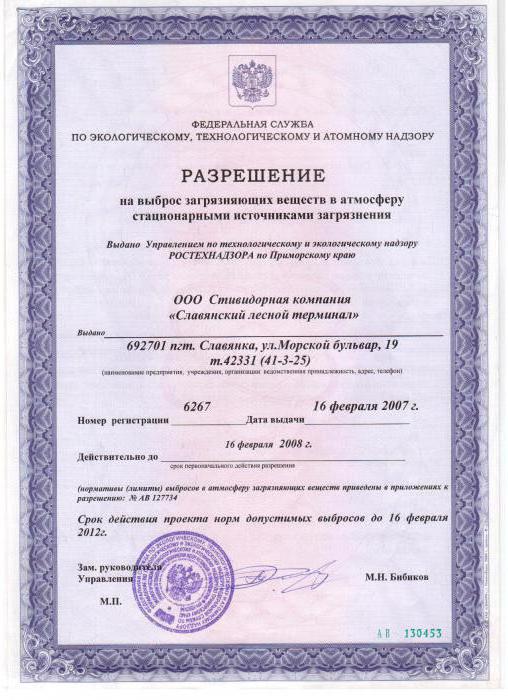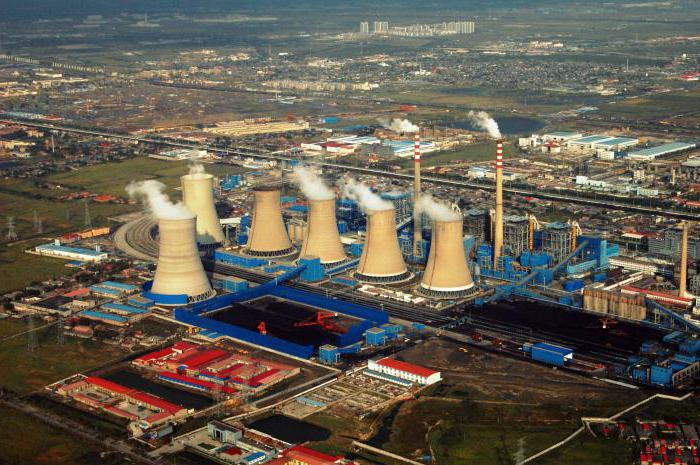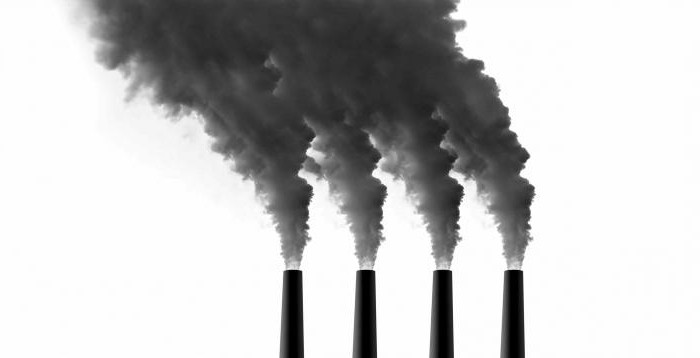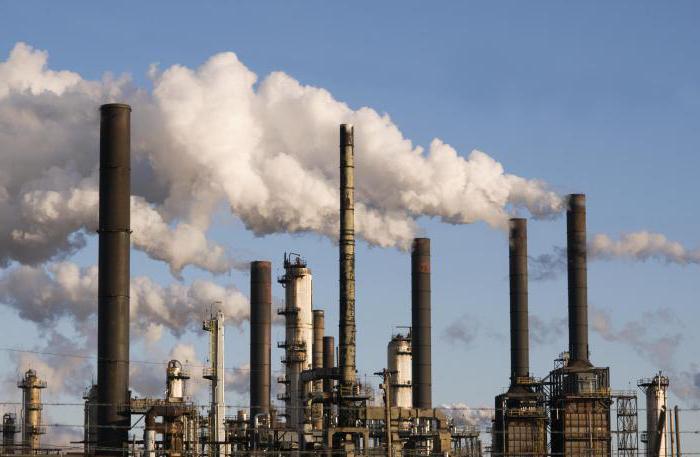A permit for atmospheric emissions is issued in order to ensure state regulation of how much economic and other activities can affect the environment, which guarantees support for its favorable condition and environmental safety.
In accordance with the laws, environmental protection by the state is ensured through the establishment of certain quality standards, as well as the allowable impact on it in the process of engaging in economic or other activities, which is fixed by regulatory documents. Among the most important standards of permissible impact provided for nature users, it is worth highlighting the MPE standards, in accordance with which a permit for emissions into the atmosphere is issued.
What it is?

According to the law, the release of any pollutants into the air by stationary equipment is provided only if the territorial authority issued an appropriate permit for this. It should be said that the process of approving standards and providing a document such as a permit for air emissions are completely different administrative procedures, each of which requires a separate investment of time.
The verification procedure itself is quite lengthy and thorough. In order for the local authority of Rosprirodnadzor to provide a permit for atmospheric emissions, a large number of standards must be attached to the application with respect to each individual stationary device, which will be a source of emissions, or for individual production territories. For this reason, many people have a lot of questions related to obtaining all documents.
In this regard, if an enterprise has any organized or unorganized stationary sources of harmful emissions, it must, before starting its work, obtain a permit for the emission of pollutants into the atmosphere, and it can be obtained only based on approved MPE standards.
Regulation
Legal regulation of the protection of the atmosphere is carried out in accordance with applicable federal legislation. Thus, any emissions can only be carried out if there is an appropriate permit, which is issued by territorial bodies in the field of environmental protection. According to the permission received, the maximum possible emission standards and other conditions are subsequently established that allow for effective protection of the atmosphere.
If such permits are not available and the conditions are violated, the relevant authorities must limit, suspend or completely cease emissions in accordance with the laws.
Issuance of permission

A public service providing a permit for atmospheric emissions in Russia is provided under applicable administrative regulations. This service is provided to various private entrepreneurs or legal entities that use mobile or stationary sources of emissions in their work, and at the same time are located at the facilities of an economic or any other activity subject to environmental supervision.
In the presence of previously agreed MPE standards, as well as their observance during the operation of all equipment, a permit for emissions into the atmosphere (sample above) is issued for the duration of their validity. At the same time, it is worth noting that if subsequently the MPE standards are not ensured, as well as in the presence of the BCS used, the validity period of the obtained permission cannot be more than one year from the date of its granting.
For various business entities that commission any new or reconstructed facilities with stationary sources of emissions in accordance with the established MPE standards (including also at the stage of construction work), an emission permit is granted for the term in the approved design documentation for the construction or reconstruction of buildings carrying out construction work, taking into account the data provided by the project, or until the indicators indicated in the project are achieved (no more than two le ).
The powers of representatives who act on behalf of business entities must be confirmed by an appropriate power of attorney, which is drawn up taking into account the requirements of current legislation. For the issuance of such permits, the company must pay a state fee in the amount of 3,500 rubles. It is worth noting that the state duty for permission to emissions into the atmosphere is paid before the application is submitted.
Do I need to do this?
Requirements for legal entities with stationary stationary sources of emissions are established by applicable law, and one of them is to ensure a thorough inventory of emissions with the subsequent preparation of MPEs.
MPEs are established by the existing territorial bodies in the field of environmental protection for a specific stationary source, as well as for the organization as a whole. According to the law, if legal entities or private entrepreneurs using emission sources cannot comply with MPEs, then the territorial bodies in the field of environmental protection have the opportunity to establish the BCB for these sources with prior coordination with similar bodies of other federal structures.
How to get it?

Not everyone knows how to get a permit for air emissions, although in the overwhelming majority of cases this is a fairly simple and quick procedure. In order to receive it, the following papers must be submitted by the applicant:
- an application asking for permission (this document must be submitted in duplicate);
- MPE or ENE standards that were previously approved by Rosprirodnadzor, as well as emission limits in relation to each established source of emissions into the air of a given business entity or individual production territories;
- a document that confirms the payment of state duty.
It should be noted that in the majority of cases the Rosprirodnadzor territorial body places special information stands containing a fairly large amount of information about how a permit is issued for the emission of pollutants into the atmosphere, who should receive it and many other facts . In particular, you can familiarize yourself with the text of the regulation with various annexes, get a detailed description of the final result of the provision of public services and extremely comprehensive information regarding the procedure for its implementation with the provision of a link to the current Regulations.
Emission limit
MPE is a standard that is defined in relation to a stationary source and in accordance with which a permit is issued for the emission of pollutants into the atmosphere.It is set in accordance with technical standards for emissions, as well as background pollution of atmospheric air, provided that this source does not exceed environmental and hygienic quality standards, as well as the maximum possible load on ecological systems and other standards.
Temporarily Agreed Release
The BCL is a temporary limit established for workers of stationary sources of emission in accordance with the quality of atmospheric air, as well as various socio-economic conditions for the development of this territory with the goal of phased achievement of MPE standards. As mentioned above, this rule should be established if the legal entity is not able at the moment to ensure approval of the MPE.
When do you need to arrange this?

In order to determine whether a given enterprise needs to fulfill the specified responsibilities, it is first necessary to determine whether there are any emission sources that are stationary objects of negative impact.
In accordance with applicable law, there are two definitions of mobile and stationary objects, which must be accompanied by a permit for emissions of harmful substances into the atmosphere:
- Stationary. An object that emits pollutants into the environment and is firmly bound to the ground (that is, if it cannot be moved without disproportionate damage to its main function), as well as explosions or disposal facilities for industrial and consumer waste.
- Mobile. A vehicle, a ship or an aircraft, as well as all kinds of inland navigation vessels equipped with engines running on long-term fuel, gasoline, kerosene, as well as natural or liquefied gas.
Mobile sources
Nowadays, the state registration of private entrepreneurs and legal entities who are issued a permit for emissions of harmful substances into the atmosphere is maintained by Rosprirodnadzor in full accordance with the established procedure. At the same time, it is worth noting the fact that when providing information about mobile sources, you must specify in the document:
- the type of source, i.e. water, rail, road or air;
- registration number assigned to the mobile source;
- environmental class of this vehicle;
- type of fuel used and its consumption.
Thus, in the process of selecting a mobile facility, it is customary to use a specific type of fuel as the main criterion, and the calculation of the emissions charge for such facilities is carried out in accordance with the volume of its consumption. At the same time, it is worth noting that mobile sources include only all kinds of vehicles, while various mobile installations that are used only within the territory of a particular enterprise are generally classified as stationary.
What do you need to draw up?

After the stationary sources used are determined on the territory of the enterprise, it is necessary to decide whether they should be taken into account by the state and whether they require permission to release pollutants into the atmosphere (sample above).
The sources subject to state accounting include those that release into the air any kind of harmful substances. At the same time, there is a certain list of polluting elements that should not be standardized and taken into account, as well as these procedures are not applied to those sources that fully comply with one of the following criteria:
- the hazard indicator established by Appendix 1 to the Procedure is greater than or equal to 0.1;
- surface concentrations of harmful emissions exceed 5% of the established hygienic standard for air quality.
Thus, if emissions from stationary sources contain substances defined by the list, or they meet one of the above criteria, that is, are subject to regulation and state accounting, they need to develop MPEs, as well as mandatory approval of standards and permission for the emission of pollutants into atmosphere (sample above).
Harmonization and setting standards

After the development of the project is completed, it is necessary to coordinate it and determine the MPE standards, and only then draw up obtaining a permit for emissions in atmosphere. At the same time, it is worth noting the fact that the management of the enterprise must understand the deadlines for which all approval procedures can be poured out and what are the reasons for the company to be denied.
At the moment, normative legal acts in no way regulate the procedure for obtaining permits for atmospheric emissions and the formation of MPE standards. In this regard, the general term of approval and any grounds for refusal in the approval process of the draft MPE are also not provided.
It is worth noting that the norms themselves with respect to specific stationary sources are determined by the territorial bodies of Rosprirodnadzor (if it is not about radioactive substances), if these sources are fully consistent with these rules and there is a sanitary and epidemiological conclusion about this.
In accordance with the laws, the general term for conducting various sanitary and epidemiological examinations upon the application submitted by a citizen, entrepreneur or legal entity is established depending on the total research volume of a particular type of product and its volume, as well as the type of activity. Moreover, this period cannot be more than two months.
Work with documents

Based on the conclusion made by experts, the territorial body under the leadership of Rospotrebnadzor will have to issue a sanitary-epidemiological conclusion, and the term for its issuance is also not regulated in any way. Only then can one count on issuing or reissuing a permit for air emissions.
The norms of the BCB and MPE should be established by the territorial bodies under the control of Rosprirodnadzor to each stationary source or their combination. The only exception in this case are radioactive substances.
In accordance with the laws, the applicant should be sent a response from the head of the territorial bodies of Rosprirodnadzor or his deputy within 30 days from the day the appeal was registered, unless otherwise specified in the order. If necessary, the total period for consideration of such applications may be extended for another 30 days, but at the same time, the applicant will be obligatorily notified of this fact and the reasons for such a decision.
Thus, the total term for approving standards is 30 days.
The draft MPE should be developed in full compliance with the established Methodology for calculating the concentration of various harmful substances in air emissions of enterprises, as well as recommendations for the creation and maintenance of a normative project and other methodological and regulatory documents.
Since at the moment the legislation does not define any grounds for refusing to approve the MPE draft, this suggests that when this project meets all the requirements and when you receive a sanitary and epidemiological conclusion, you cannot refuse to establish MPE.
After such a conclusion is drawn up on the project, and all the necessary standards are fully approved, the enterprise must contact the territorial body operating under the supervision of Rosprirodnadzor in order to issue or reissue the permit for air emissions.
The only reason that can be used to refuse to issue a permit is the presence of false information in the materials provided by the applicant. There are no other reasons for issuing refusals to issue or extend a permit for air emissions.
Why make them out?
If this permit is not available, then in this case emissions may be limited, suspended or completely terminated in the manner specified by applicable laws. At the same time, it is worth noting that all persons who are guilty of violating applicable laws in the field of atmospheric air protection bear administrative, criminal and other liability depending on the gravity of the crime.
Thus, in accordance with the current Code of Administrative Offenses, harmful physical effects on the air or the release of any harmful substances into it without a previously issued permit entails the imposition of an administrative fine, the amount of which is:
- 2000-2500 - for citizens;
- 4000-5000 - for officials;
- 4000-5000 - for private entrepreneurs conducting their activities without having a legal entity (in this case, activities are suspended for 90 days);
- 40 000-50 000 - for legal entities (in this case, activities are suspended for 90 days).
Given this, the correct execution of all documents allows the company to save a lot of money.
Thus, permission to release into the atmosphere pollutants at the enterprise is a binding document, without which the legitimate conduct of their activities is impossible, and ultimately it will simply be suspended, and the owner of the sources will receive a corresponding fine.
